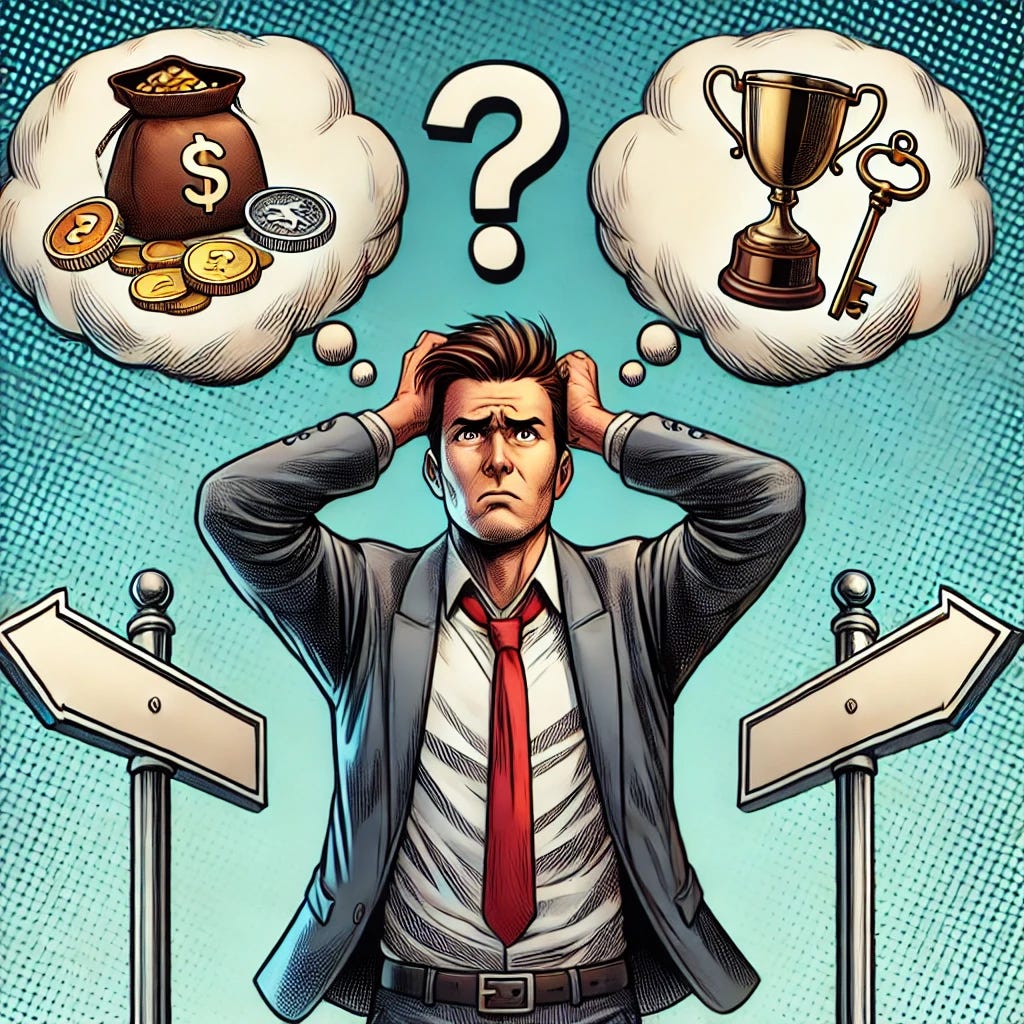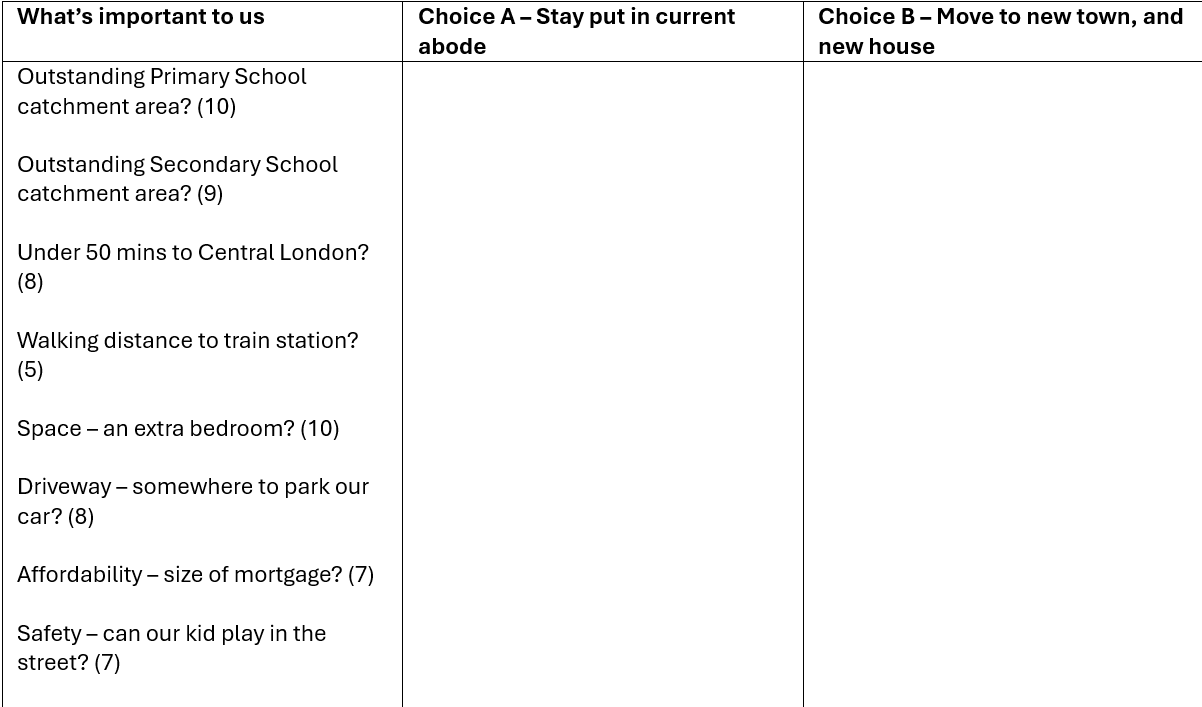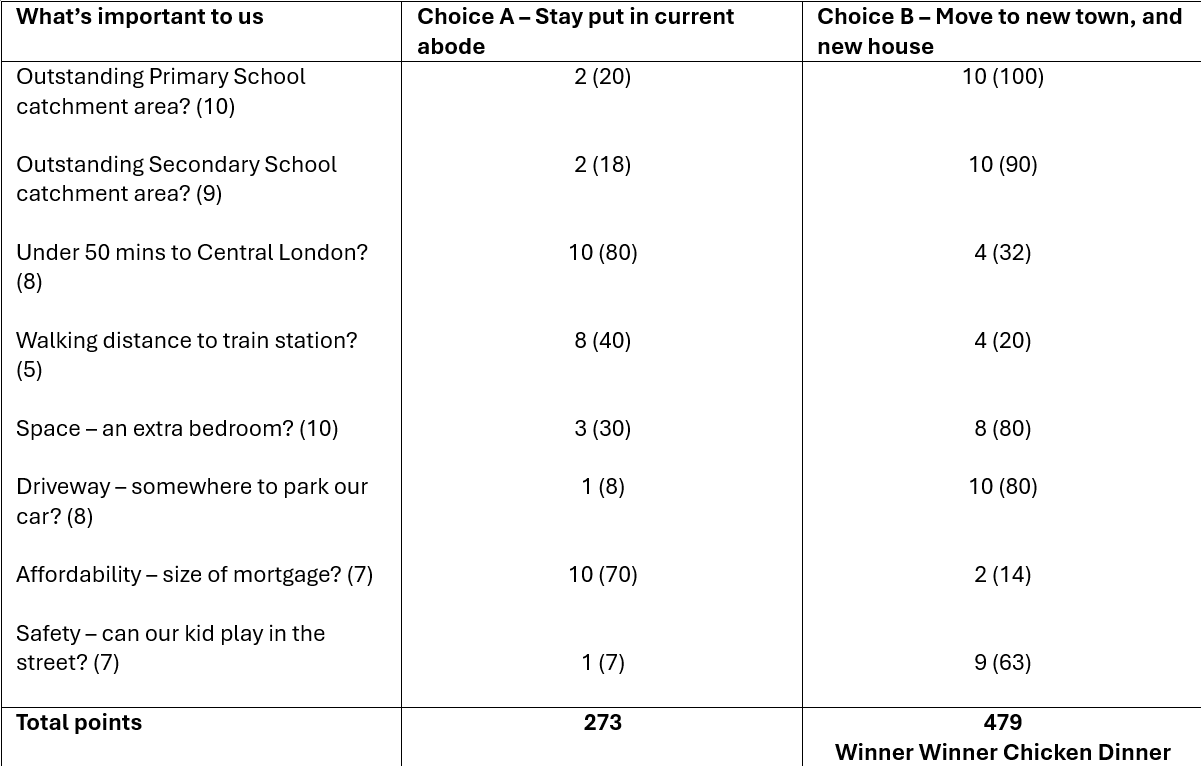Stuck in analysis paralysis? Unlock the way to clarity
How to get your gut instinct and your brain working together better
Decisions are everywhere.
How to spend your free time; what to wear on a night out; or my personal favourite - what to cook for dinner every night. 🙃
Steve Jobs had the right idea when he opted to wear the same roll neck jumper, jeans, and trainers every day.
Making small decisions like these is exhausting at the best times.
It doesn’t get any easier the bigger the decision gets.
Whether or not to quit your job; where to send your kids to school; or which town to move to?
These sorts of bigger decisions can really suck the life out of us.
Our emotions can have a significant impact on our decision-making abilities too. If you’re feeling low or suffering from depression or anxiety, it can feel harder to make decisions due to low self-esteem, lack of motivation, or fear of failure.
And if you’re overly stressed making hasty decisions to find a feeling of relief can sometimes mean choosing the wrong thing.
As a parent still waking up in the night for her young ones, for me tiredness is the killer. It’s challenging to think clearly, and much easier to default to less thought-out choices, which often have negative outcomes.
But I’ve found a simple tool that is particularly effective at helping make decisions quickly and easily and doesn’t drain my energy. I know I can be a bit sad, but this is actually a fun tool!
My tool of choice is a simple weighted decision matrix.
I’ve often used these matrixes with my clients when looking at different opportunities for improvement for their business functions / departments / processes, to help decide which options to take forward. But you can use them to help with personal decision making as well.
When Bean came along, Mr S and I faced a big decision. Move house or to stay where we were?
We loved living where we were, it was full of life, diversity, great food options and great neighbours. But it just didn’t have the space that we needed for our growing family.
In a pickle, we did what all consultants do and pulled out the magic whiteboard and sticky notes. We mapped out what was important to us, and then created our own decision matrix.
This is how we did it:
Step 1: We created three columns, one labelled ‘What’s important to us’, and then two columns showing the two choices we had: staying where we were or moving to a new location and a new house.
Step 2: We listed out the things that were important to us in the first column.
Step 3: We gave each of these important things a weighting out of ten (10 being the most important thing) - we added these weightings into the same column.
Step 4: Then we ranked each of the criteria on the left on a scale of 1-10 for each choice (10 being highly desirable).
Step 5: Then we multiplied the weighted importance criteria against each number under the two choices. For instance, for the outstanding primary school option we did (10 x 2 for choice A, and 10 x 10 for choice B). Our table ended up looking like this:
As you can see, we had a clear winner – moving to a new town and new house. Even though our location and our apartment were amazing. We knew that it wouldn’t work for the things that were important to us at this stage of our lives.
The matrix made it much easier to come to this decision.
Here are four key benefits you’ll get from using a simple tool like this to help with decision making:
You reduce decision paralysis.
When we’re presented with too many options, our brains struggle to weigh the pros and cons of each one, which can lead to cognitive overload.
Research has shown that when we have fewer choices, we make decisions more easily and are often more satisfied with them.
Here we’re only using two options making it easier to commit to one.
You reduce the likelihood of making the wrong choice.
Anxiety and stress make it harder to confidently commit to deciding.
If you’re stuck in "analysis paralysis," or overthinking due to fear of making the wrong choice, this can lead to avoidance or procrastination, and it's often driven by the desire to avoid regret or negative consequences. This is particularly strong in high-stakes decisions, such as choosing a career or making a big life move.
I find that adding numbers to decisions helps to firm them up. When you’re faced with the option of do you choose 273 vs 479, it feels mentally easier to accept that one of those options is the right one.
You overcome any prejudice in your thinking.
We’re wired with cognitive biases that make decision-making even harder.
One common bias is the ‘status quo bias,’ where we prefer sticking to familiar options rather than taking risks with new ones, even if the new choice might be better.
Another bias is anchoring, where we give too much importance to the first piece of information we receive, which can skew how we evaluate other options.
By weighting decisions using a simple table like this, we can overcome these biases more readily.
You are better able to balance your intuition with your logical brain.
The decision-making process also involves two types of thinking: fast, intuitive thinking (System 1) and slower, more rational thinking (System 2).
While intuitive thinking is quick and automatic, rational thinking requires more effort and is slower, which is why it can feel exhausting to process complex decisions.
Balancing these two systems can be tricky, especially in situations where neither instinct nor logic alone gives a clear answer.
This tool gives you the chance to ‘go with your gut’ whilst also allowing time for your rational mind to catch up.
The takeaway
Decisions are all around us, but they don’t have to drain us.
Your energy is precious. Take the time to tie together what your gut is telling you with what your logical brain thinks, and you’ll notice that making a choice will feel easier.
What do you think? Can you see yourself using this next time you need clarity on a decision?
Have a great week!
-Selda
P.S. If you’d like to learn more about how to build a life you love, here are a few ways I can help you:
Personal guidance and coaching to find more hours each day:
Double your productivity and do more of what matters to you:
🚀Supercharge Your Productivity: Take the stress out of your week and juggle all of your jobs without working yourself to death
⚖️7 Proven Strategies to a Better Work Life Balance: Spend less time at work and more time on the things you really want to do










Thanks for sharing, Selda!
What do I think? I can't decide!